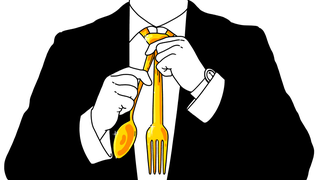
 The Grown-Up KitchenWelcome to The Grown-Up Kitchen, Skillet’s series designed to answer your most basic culinary questions and fill in any gaps that may be missing in your home chef education.
The Grown-Up KitchenWelcome to The Grown-Up Kitchen, Skillet’s series designed to answer your most basic culinary questions and fill in any gaps that may be missing in your home chef education.In a lot of cases, parchment paper and aluminum foil are interchangeable. Both can be used to line baking sheets to prevent food from sticking to the pan (and make clean-up easier), but I always have both in my kitchen because parchment paper can do things that foil cannot, and vice versa. And, though we have fairly extensive guides on both kinds of kitchen roll, there are some general guidelines that can help you choose between the two.
Think about what you’re cooking, and the desired outcome
Table of Contents
Are you baking delicate sugar cookies with golden, barely-browned edges? Or are you roasting carrots just shy of charred? You’ll want parchment paper for the former and aluminum foil for the latter. When placed underneath your food, foil reflects heat back onto the food’s surface, accelerating the cooking process and promoting browning. This is a good thing if you want deeply flavored carrots with crispy ends, but bad if you want a pan of tender cookies that look like they’ve been merely kissed by the oven’s heat.
Conversely, aluminum foil makes a much better shield than parchment, and can reflect heat away from food to keep it from burning. This is especially helpful for pie and poultry, two things whose outsides have a tendency to brown more quickly than their insides cook.
Think about temperature
Parchment paper can withstand temperatures of up to 420℉, which is well above the temperature range at which most things are baked. And, while it’s not as heat sensitive as wax paper (which should never go in the oven), it’s still technically paper, and should not be used to make little packets of potatoes (or anything else) that get thrown on the grill. That’s a job for foil. Both, however, can be used to bake fish—which is usually cooked in the 375℉-400℉ range—though there is something a little more pleasing about fish en papillote (that’s French for “in parchment”).
G/O Media may get a commission
Think about stickiness
Parchment is inherently nonstick, but only some foil—the kind that is specifically sold as “nonstick”—is, but you can always spray it with a little cooking spray if necessary. But for truly delicate jobs, like setting tempered chocolate, for instance, I always reach for parchment paper. It’s smooth surface ensures my chocolate comes out crinkle free, which is hard to accomplish with aluminum foil, even the nonstick kind.
Think about structure
Both materials can be manipulated into various kitchen tools. Folded parchment makes a great cupcake liner (and a decent piping bag), and foil can be fashioned into a makeshift baking rack, or a ring to help buns or eggs keep their round shape while cooking. Switch their roles, however, and you’ll quickly see that the two are not always interchangeable.
Some things come down to personal preference. I prefer to roast potatoes at a super high heat, and appreciate the extra browning parchment affords me, but will reach for parchment if I want a softer, more delicate preparation. But in general, foil is great for higher heat preparations of sturdier foods, while parchment is better suited for baked goods, particularly those with an “I’m baby” vibe.
